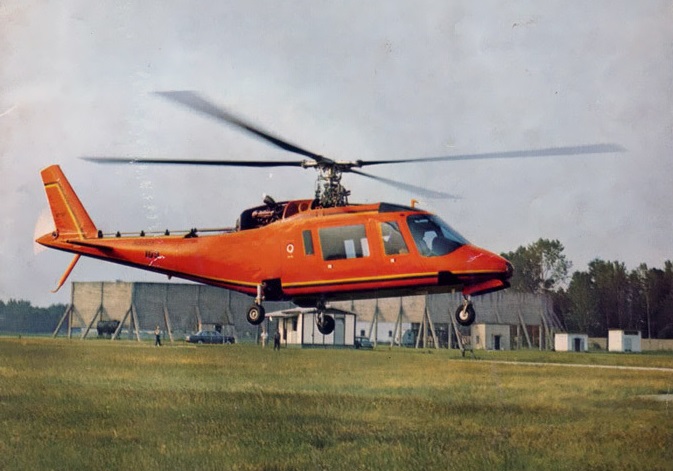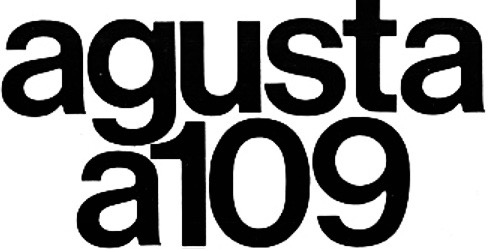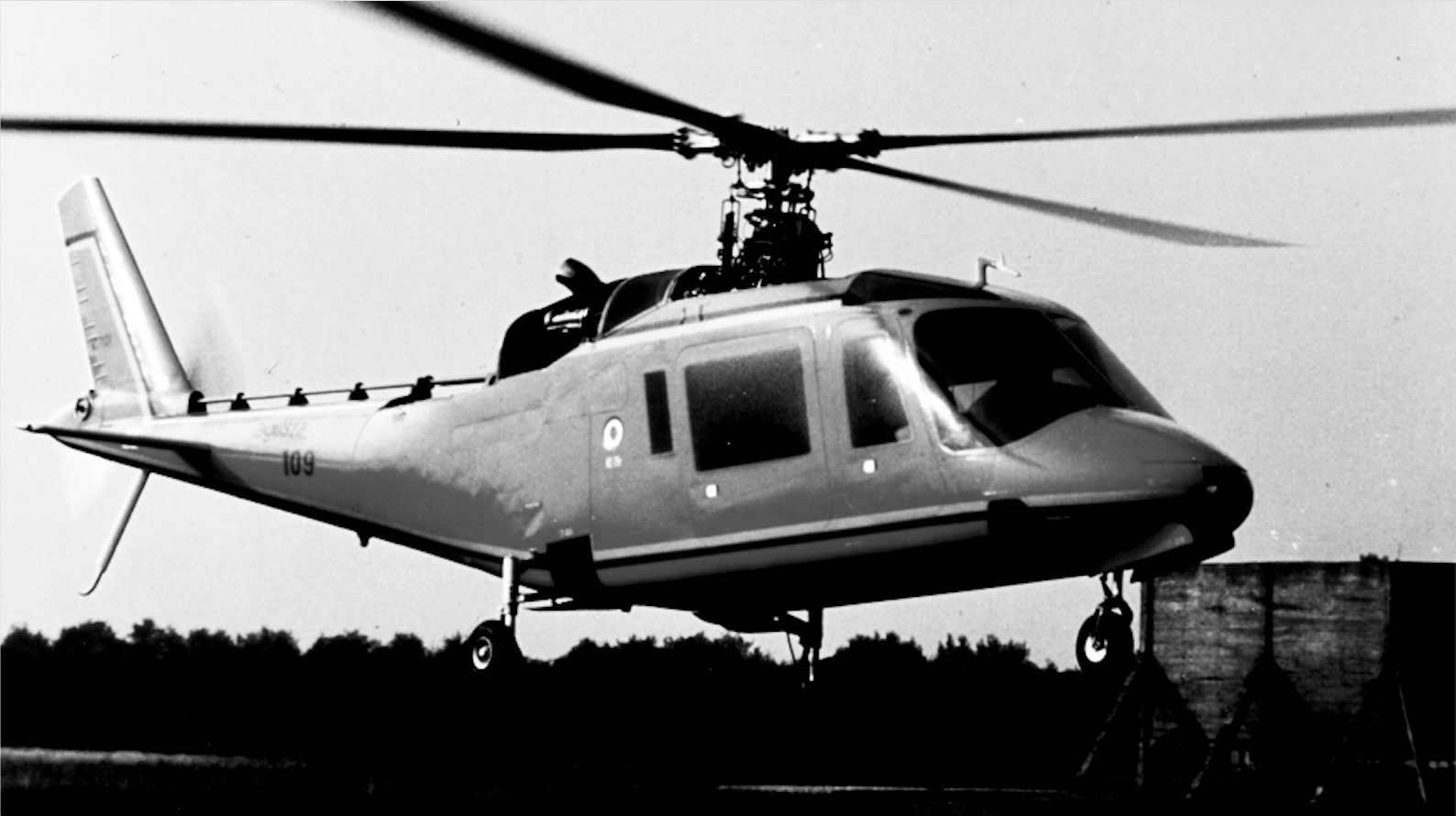

The Agusta A109 is an 8-place, light, twin-engine helicopter with a four-blade, fully-articulated main rotor and retractable landing gear. It can be flown by one pilot and carry up to seven passengers. The helicopter is certified for flight in visual meteorological conditions. It was certified by Italy’s Ente Nazionale per l’Aviazione Civile (ENAC) on 28 May 1975, and by the U.S. Federal Aviation Administration the following month. The first production helicopters were delivered in 1976.
The original production variant A109 was 10.71 meters (35 feet, 2 inches) in length. The fuselage had a maximum width of 2.88 meters (9 feet, 5 inches) and the helicopter’s overall height was 3.30 meters (10 feet, 10 inches). The maximum gross weight was 2,450 kilograms, or 5,400 pounds.
The main rotor diameter of the A109 is 11.00 meters (36 feet, 1 inch), and turns counter-clockwise, as seen from above. (The advancing blade is on the helicopter’s right side.) In normal operation, the main rotor turns 365–385 r.p.m. (95–100%). In autorotation, the range is 346–424 r.p.m. (90–110%). The two-bladed semi-rigid tail rotor had a diameter of 2.03 meters (6 feet, 8 inches). It is positioned on the left side of the tail boom in pusher configuration. The tail rotor turns clockwise, when seen from the helicopter’s left side. (The advancing blade is below the axis of rotation.)

The A109’s maximum speed (VNE) is 168 miles per hour (270 kilometers per hour). The maximum operating altitude is 15,000 feet (4,572 meters). The helicopter’s total useable fuel capacity is 550.0 liters (145.3 gallons).

The A109 remains in production in both civil and military variants. It is produced in Italy by Leonardo S.p.A. (formerly, AgustaWestland) and in China by Jiangxi Change Agusta Helicopter Co., Ltd.
© 2019, Bryan R. Swopes
Clockwise/advancing blade on the left?
Steve, I’m trying to figure a way to blame spell-check for that one. 🙂
Hi Bryan,
Shouldn’t the text of this article read “The main rotor…turns COUNTER-clockwise, as seen from above”?
Thank you,
John
Yes, John, thank you. I fixed it.
Hello Bryan…… The picture of A109 shown at the top of the article has the caption of “hovering in ground effect” – or HOGE….. can you put into lay terms how HOGE differs from HIGE ?
Hi, Tom. Hovering in Ground Effect (HIGE) is generally considered to be when a helicopter is hovering with the main rotor within one rotor diameter of the surface, while hovering out of ground effect (HOGE) is anything higher than that. When a helicopter is hovering, air is drawn downward through the spinning main rotor which creates vortices that circle back up to come down on the blade tips. Because of the angle of attack of these vortices, the lift produced by the outer rotor blade is limited, or effectively stalled. When hovering in ground effect,though, the presence of a surface interrupts the formation of the vortices, reducing their size and their impact on rotor blade performance. The blades produce more lift, which allows the helicopter to hover with less power. Because of this, helicopter performance charts show both altitude limits for HIGE and HOGE. A helicopter can hover in ground effect at much higher density altitudes than it can when out of ground effect. Great question. Thanks! 🙂
Off Subject: Modern Fire fighting
An interesting news story:
https://billingsgazette.com/news/local/chinook-helicopter-loaded-into-giant-cargo-plane-for-trip-to-indonesia/article_708880b5-a604-5aab-951d-778b52f43c05.html
Chinook helicopter loaded into giant cargo plane for trip to Indonesia